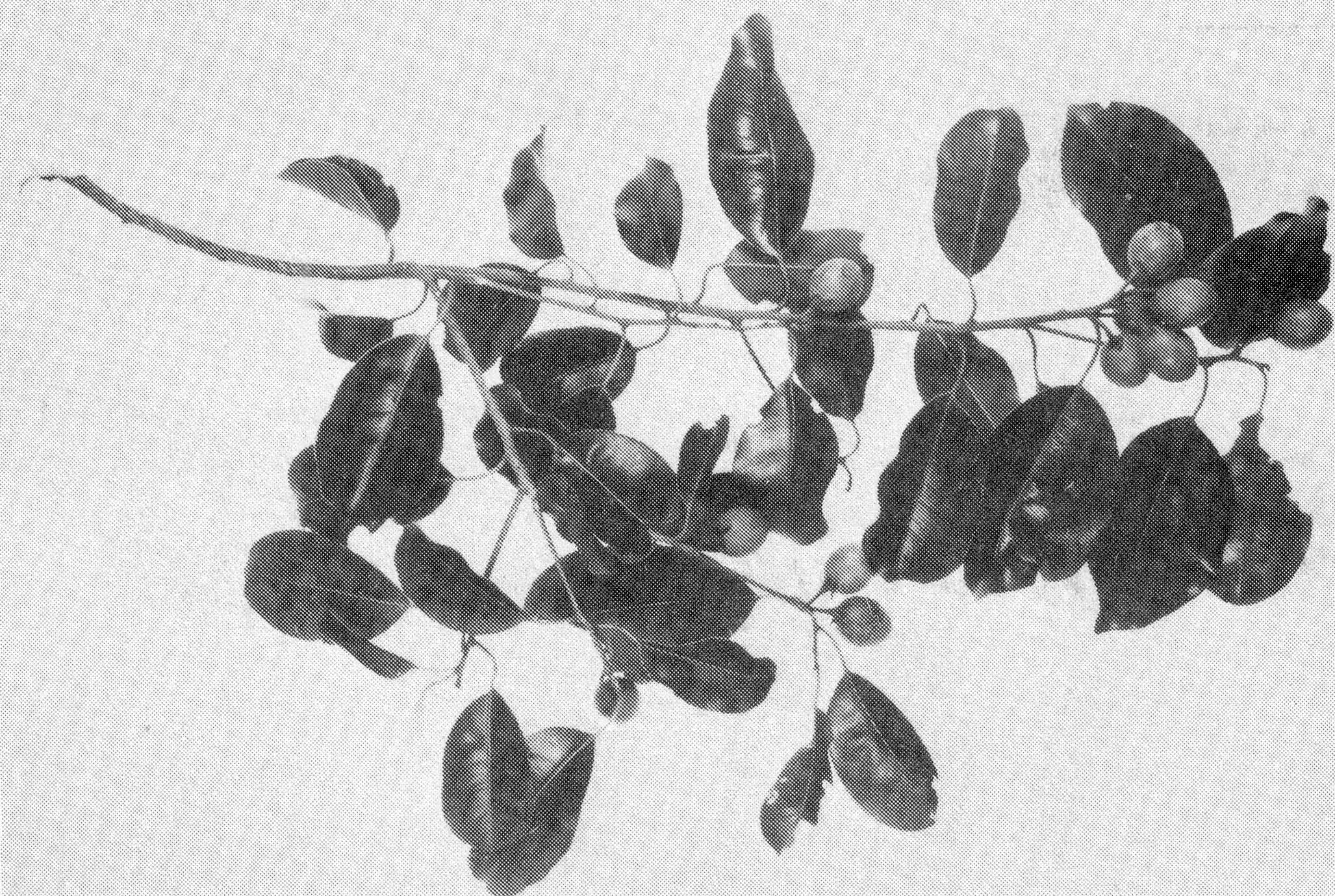|
Description: Tree to 20 m. Propagation by seed, grafting. Fruit production in 8-12 years from seed, 4-5 years from grafts. Flowers August-October (Florida). Hermaphroditic, usually self-fertile. Fruit matures in about 180 days. Fruit globose, 5-8 cm in diameter, solitary; external color purple or light green, internal purple or white. Utilization: Pulp eaten fresh, in preserves, beverages. Flavor sweet; general appeal. Good for home garden and local marketing. Moderate potential for commercial planting. References: Campbell 1974. Fouqué 1974, Leon 1968, Popenoe 1939. Madhuca longifolia Macbr. (= Bassia longifolia L.) Common names: Indian butter tree, wild sapote tree (English); mahua, moha, mowa (India). Origin: India, Sri Lanka. Distribution: Introduced elsewhere into Tropics but rare. Cultural requirements: Hot tropical climate with low to medium rainfall. Description: Large tree. Propagation by seed. Fruit 5 cm long, external color yellow. Utilization: Pulp eaten fresh. Seeds most important as source of oil for cooking, soapmaking. Sap from flowers source of sugar, also used to make wine. Potential needs to be evaluated through wider introduction. Reference: Dastur 1951. Manilkara kauki Dubard (= Mimusops kauki L.) Common names: sau, saws (Malaya); pekola (Indonesia); bilat-bilat (Philippines). Origin: Southeast Asia. Distribution: Introduced into many places In Tropics. Cultural requirements: Tropical or warm subtropical climate. Tolerant of a variety of soil types, light frost. Description: Tree to 15 m. Propagation by seed. Fruit ovoid, 3.5 cm long, exterior color orange. Utilization: Pulp eaten fresh. Flavor sweet, insipid. Little potential as food crop. References: Molesworth Allen 1967, Wester 1925. Manilkara zapota Van Royen (= Achras sapota (Mill.) Fosb.) Common names: sapodilla, naseberry (English); chicozapote, nispero (Spanish); sapotille (French); sapoti, sapota, sapotilha (Portuguese). |
Origin: Central
America. Distribution: Introduced widely into lowland Tropics. Cultural requirements: Hot tropical lowlands with low to relatively high rainfall. Adapted to a variety of soil types, especially calcareous soils. poor growth in heavy clays. Not tolerant of frost. Description: Tree to 20 m. Propagation by seed, grafting (layering reported successful in some areas). Fruit production in 6-10 years from seed, 3-5 years from grafts. Main bloom in September-October, some all year (Florida). Fruit matures in 180-240 days. Fruit spherical, ellipsoid, or conical, 5-15 cm in diameter, 100-500 g; external color brown; internal color white, orange, tan, or brown. Varieties selected in Florida. Utilization: Pulp eaten fresh, in desserts. Flavor sweet: wide appeal Good potential for home garden and commercial production. Widely grown in tropical America, India, Philippines. References: Campbell et al. 1967, Popenoe 1939. Mimusops djave Engler Common Names: djave nut, false shea butter nut (English); nyam (West Africa). Origin: Africa. Distribution: Africa. Cultural requirements: Hot, wet tropical lowlands. Description: Large tree. Propagation by seed. Utilization: Pulp eaten fresh. with other foods. Seed a source of fat used in cooking. Flavor subacid; low appeal. Little potential outside native area. Reference: Dalziel 1948. Mimusops elengi L. Common names: bulletwood. Indian medlar (English); pokok tanjong (Malaya), borsali, bukul, elengi (India). 
Figure
29. Mimusops elengi, a fruit with latex that bothers most persons.
|